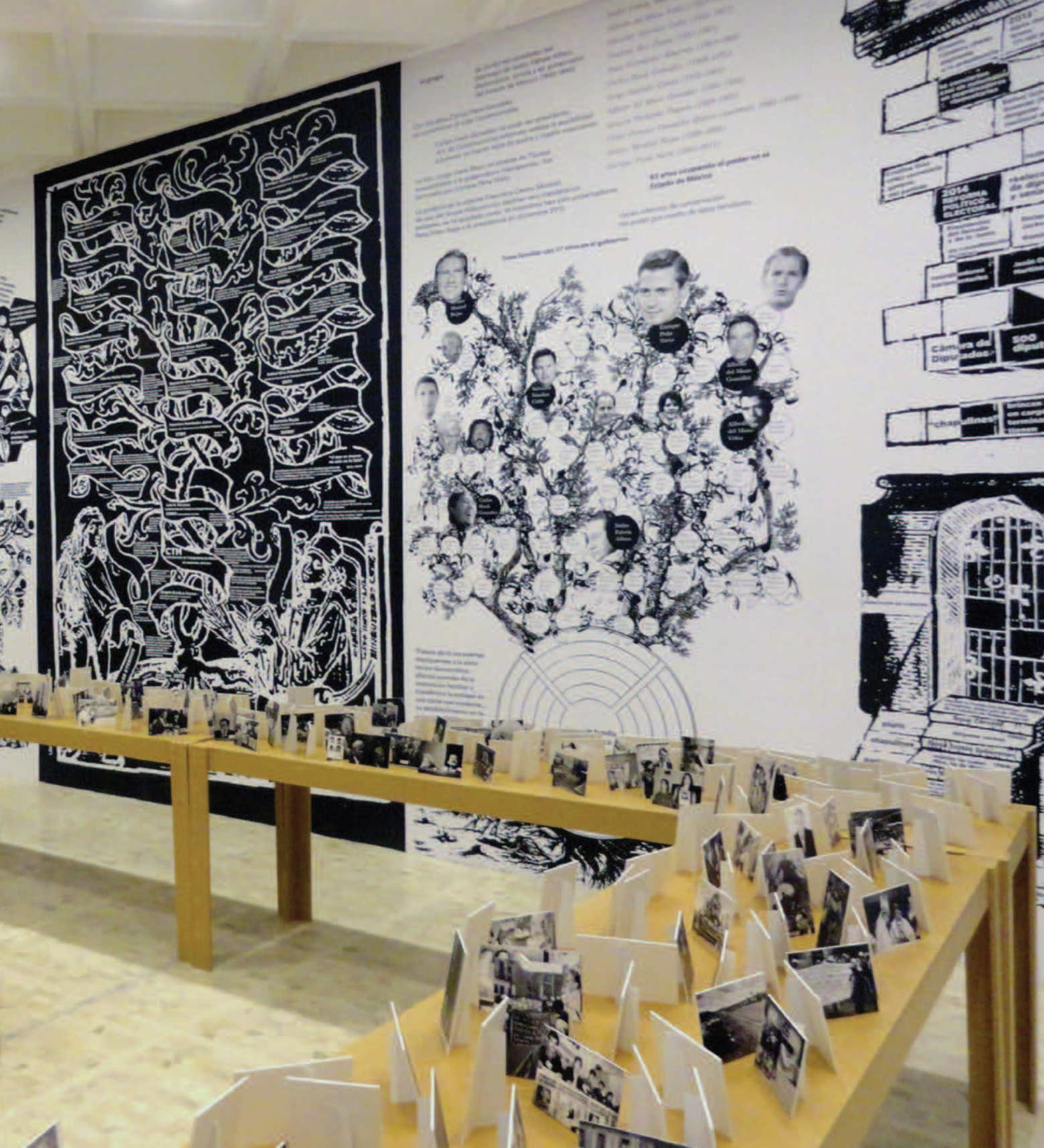Atlas Eidolon
Erick Beltrán
This piece was inspired by the Renaissance and Medieval systems of art of memory, such as Ars combinandi, by Ramón Llull and Giordano Bruno, and the image theory put forth by Aby Warburg, the pioneer of iconology, in his Atlas Mnemosyne. In contrast to these ancient models of memory, however, Beltrán replaces magical and astral symbols with public figures, placing the viewer inside the debate over the repetition of political models and their appearance in the public sphere.

The piece is structured as a dynamic sculpture with a system of revolving rings, their concentric movements producing repetitive, hypnotic visual effects, and a series of diagrams with images and animations that form a pavilion. Its objective is to display the networks of power and genealogy of the Enrique Peña Nieto presidency (2012–2018).
In this reading machine, diagrams and animations constitute a system of persistent image-mapping in which a certain order of appearance and the rearrangement of the journalistic archive activate the collective psyche. In doing so, they show how the actors in the Mexican political system, even when the individual officials change, are a ghostly formula that comes back to life with every new presidency—in such a way that history continually repeats itself. The piece was produced specifically for the Museo Tamayo, and its presentation was subject to questioning and political interference.
ERICK BELTRÁN (1974)
Atlas Eidolon, 2014
Installation. 1100 PVC photographs, spherical metal structure, 14 photocopied diagrams
Gift of the artist, 2016


